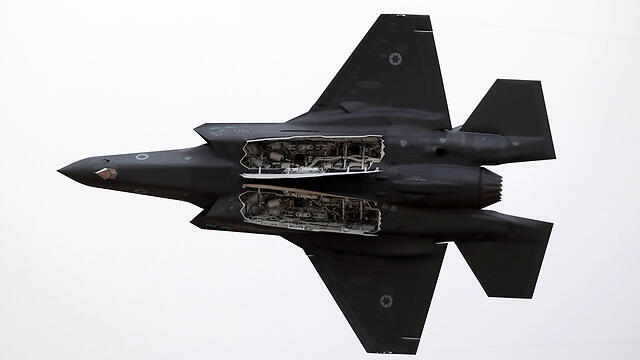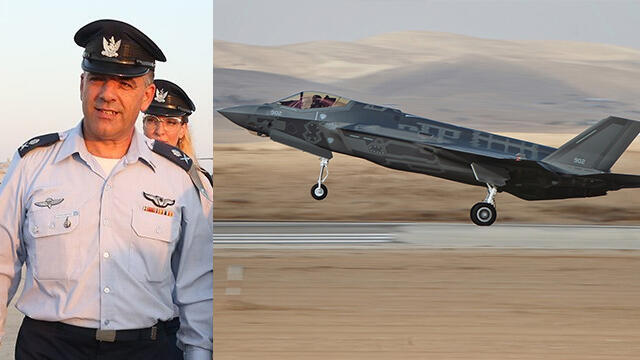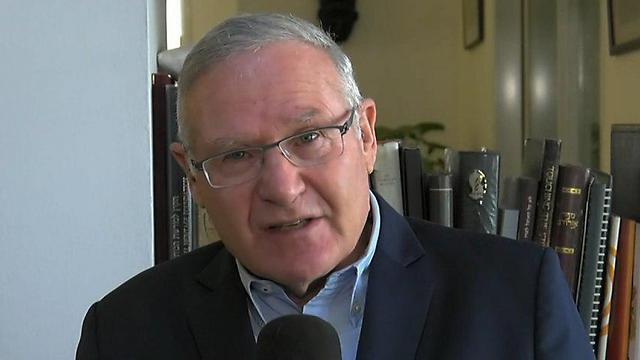Getting your Trinity Audio player ready...
Israel remains active in Syria even after the recent strike on May 10 in response to rockets that were fired by Iranians at IDF posts in the Golan Heights, a senior Israel Air Force officer said Tuesday.
"We can assume that operations have been carried out since the latest strike in Syria, and we are maintaining our freedom of action," he said. "The Iranian resolve in the region continues, and we keep operating and disrupting under the war threshold."
Addressing the decision to reveal the strikes carried out by the F-35 stealth fighter jet (Adir), the officer said that "beyond the satisfaction from the Adir's performance and abilities, the perceptual aspect carried a lot of weight too."
The officer spoke at a conference in Herzliya attended by more than 20 air force commanders from around the world.
IAF Commander Major-General Amikam Norkin told the Herzliya conference earlier Tuesday, "We attacked twice in the Middle East with the F-35—we're the first in the world to do so."
He presented a photo of an Israeli F-35 jet circling over Beirut and discussed the Iranian May 10 attack against Israel, saying the Quds Forces fired 32 rockets at Israel, and not 20 as the IDF previously reported, prompting a harsh Israeli response.
He also said Syrian aerial defense systems fired over 100 missiles at IAF jets as they were attacking Iranian targets in Syria in retaliation.
"We checked what the Iranians were doing around us," Maj. Gen. Norkin said in his remarks. "The Quds Forces set up at the T-4 base, which is some 250 kilometers from Israel. From this base they tried to attack using a drone that infiltrated Israel several months ago. After that incident, we identified that they were continuing to store weapons at the base, including aerial defense capabilities that we attacked over the past month."
"In recent weeks, we realized Iran had sent missiles and long-range rockets to Syria, including (BM-27) Uragan launchers that we attacked north of Damascus," he continued.
Norkin went on to note that "our aerial defense systems—the Arrow, the Iron Dome and David's Sling—have an 85 percent success rate in interception."
'Image of F-35 over Beirut conveys a message to Hezbollah'
Major-General (res.) Amos Yadlin, a former Military intelligence director and former head of the IAF Planning Department, told Ynet on Tuesday: "It's only natural that the F-35 Adir jet is taking part in the Air Force's activity against the Iranian entrenchment in Syria."
Yadlin, a former combat pilot, said that the image presented by the IAF commander "concealed some kind of intentional message to Hezbollah, which is possibility being pressured by the Iranians these days to carry out the operation they failed to carry out, the retaliatory attack against Israel.
"This message basically states, 'You are exposed both from an intelligence aspect and from an operational aspect, and we have considerable abilities which you should ponder before launching anything towards Israel."
Yadlin added that "the F-35 didn't join the Air Force to appear in the Independence Day parade and in the state's 70th anniversary celebrations, but to carry out operational missions. I assume the activity was against Syria. The advantage of this plane is that the Syrian defense is likely incapable of detecting it. When the Iranians tried to create the retaliatory operation against us, there was a feeling that the planes came out of nowhere."
Energy Minister Yuval Steinitz, a member of the Political-Security Cabinet, didn't sound too impress by the IAF commander's revelation. "Our main fighter jets are still the F-15 and F-16, because their ammunition carrying capacity is much higher and so is their range. Each plane has its own advantages, but it's nice that Israel made the stealth fighter jet operational too for the first time in the world. I believe our enemies are as afraid of the F-15 as they are of the stealth jets."
Alexandra Lukash and Attil Somfalvi contributed to this report.
First published: 13:45, 05.22.18




